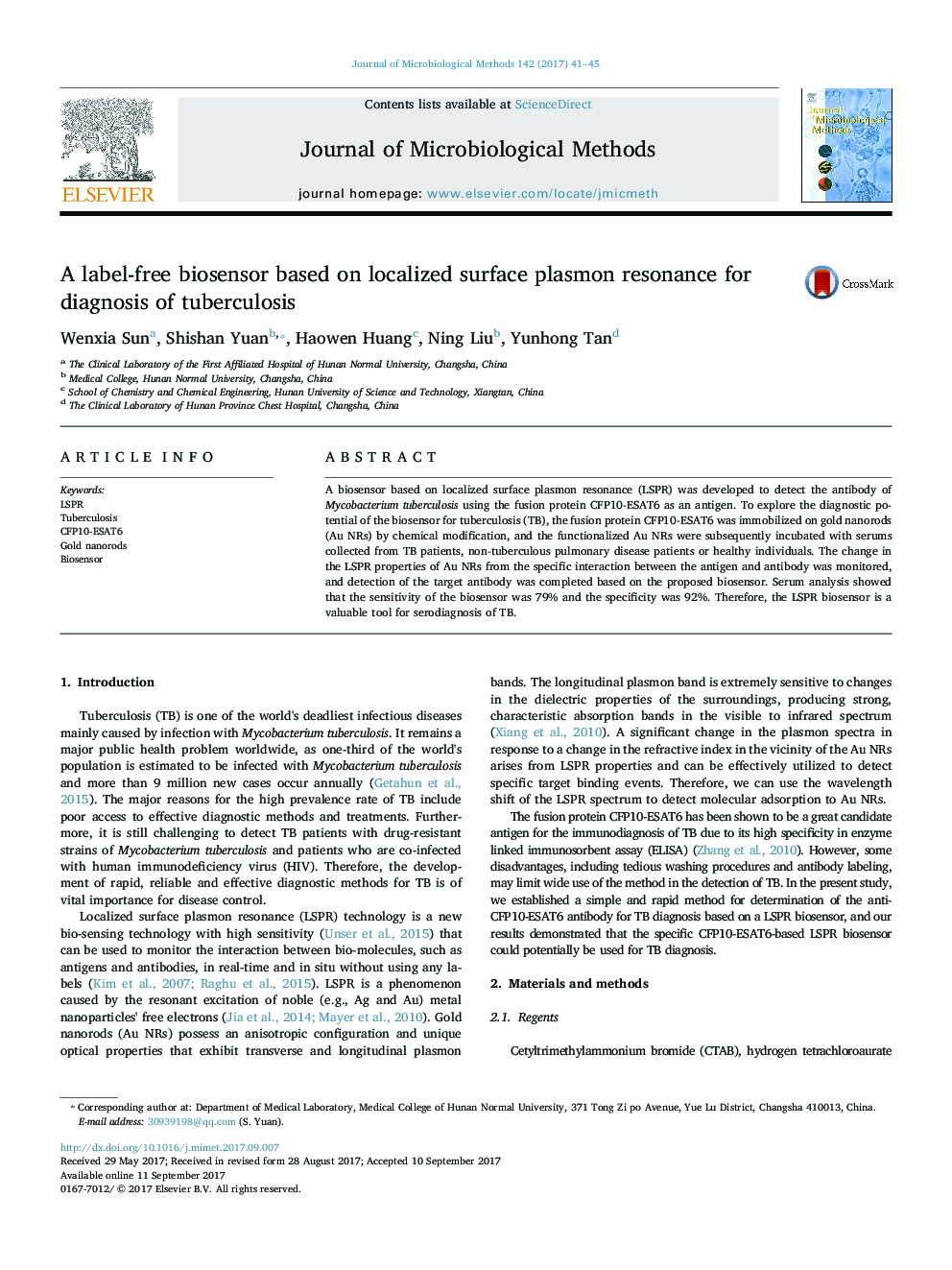| Article ID | Journal | Published Year | Pages | File Type |
|---|---|---|---|---|
| 5522159 | Journal of Microbiological Methods | 2017 | 5 Pages |
â¢Fusion antigen CFP10-ESAT6 was produced.â¢A CFP10-ESAT6-based LSPR biosensor was synthesized.â¢The sensitivity of the biosensor was 79% and the specificity was 92% for serodiagnosis of TB.
A biosensor based on localized surface plasmon resonance (LSPR) was developed to detect the antibody of Mycobacterium tuberculosis using the fusion protein CFP10-ESAT6 as an antigen. To explore the diagnostic potential of the biosensor for tuberculosis (TB), the fusion protein CFP10-ESAT6 was immobilized on gold nanorods (Au NRs) by chemical modification, and the functionalized Au NRs were subsequently incubated with serums collected from TB patients, non-tuberculous pulmonary disease patients or healthy individuals. The change in the LSPR properties of Au NRs from the specific interaction between the antigen and antibody was monitored, and detection of the target antibody was completed based on the proposed biosensor. Serum analysis showed that the sensitivity of the biosensor was 79% and the specificity was 92%. Therefore, the LSPR biosensor is a valuable tool for serodiagnosis of TB.
